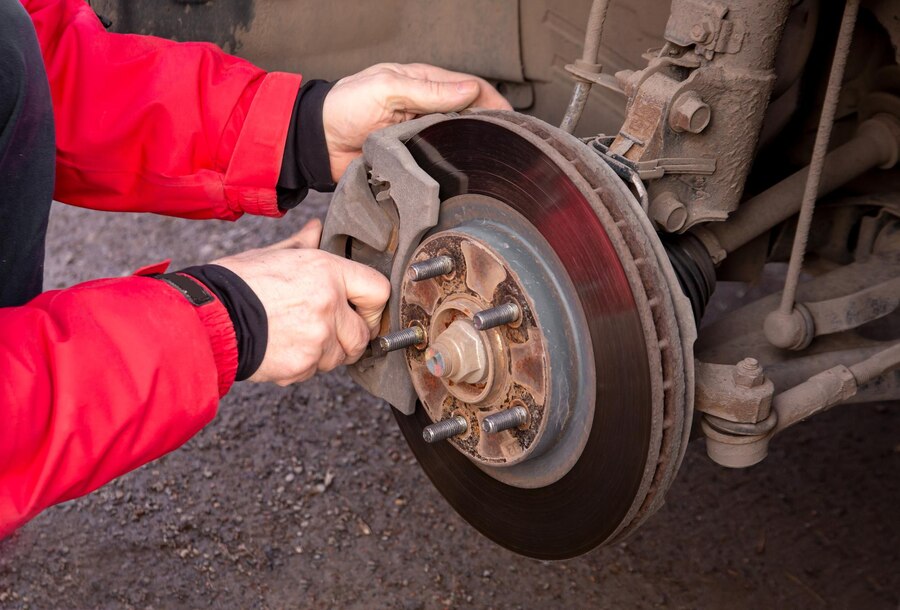Understanding the role of performance brakes in your vehicle is more than just a matter of technical interest; it’s about appreciating the heart of vehicular safety and control. For car enthusiasts and everyday drivers alike, the brake system is not just another component; it’s a critical safety feature. When you consider upgrading to performance brakes, you’re not just tweaking a part of your vehicle; you’re enhancing your driving experience and potentially your safety. The question then arises: are performance brakes worth the investment? This is not just about cost but about understanding the value they bring to your driving experience.
What Are Performance Brakes?
Performance brakes are not your average braking system. They are the result of advanced engineering, designed to offer superior efficiency and durability compared to standard brakes. The key differences lie in the materials used, the design of the components, and their overall functionality. Performance brakes might include features like larger rotors, improved brake pad compounds, and enhanced caliper designs. These differences are not just for show; they translate into tangible benefits for your vehicle. Understanding these distinctions is crucial in assessing whether performance brakes are a valuable addition to your car.
Benefits Of Performance Brakes
The advantages of upgrading to performance brakes are numerous and significant. Firstly, they offer enhanced stopping power. This means your vehicle can come to a stop more quickly and reliably, which is crucial in emergency braking scenarios or high-speed driving conditions. Secondly, performance brakes are designed to handle heat more effectively. During intense use, such as in sports driving or heavy traffic, brakes can heat up, leading to brake fade.
Performance brakes combat this with better heat dissipation, maintaining their effectiveness even under stress. Lastly, the durability of performance brakes often surpasses that of standard brakes. This is due to the high-quality materials and advanced designs used in their construction, translating into fewer replacements and repairs over time. In essence, performance brakes are not just about immediate results; they’re an investment in the long-term performance and safety of your vehicle.
Types Of Performance Brakes
There are mainly two types of performance brakes: disc and drum brakes. Each type uses different materials like ceramic or metallic compounds, which significantly impact their performance and suitability for various vehicles and driving conditions.
Disc Brakes
These are the most common types of performance brakes found in modern vehicles. They consist of a brake rotor attached to the wheel and a caliper that holds the brake pads. When you apply the brakes, the pads squeeze the rotor, slowing down the vehicle.
The materials used in disc brakes, such as ceramic or high-performance metallic compounds, are chosen for their ability to handle high temperatures and provide consistent braking power. This makes them particularly suitable for high-speed driving and situations where quick, responsive braking is essential.
Drum Brakes
Less common in performance applications but still relevant, drum brakes work by having brake shoes press outwards against a spinning drum attached to the wheel. While they might not offer the same level of performance as disc brakes, especially in high-heat situations, they are often praised for their durability and effectiveness in everyday driving conditions. Drum brakes made with high-quality materials can still be a significant upgrade over standard brakes.
Performance Brakes In Different Driving Conditions
The beauty of performance brakes lies in their versatility across various driving conditions:
City Driving
In the stop-and-go traffic of urban environments, the responsive nature of performance brakes is a boon. They provide the driver with better control, allowing for smoother and safer driving in congested areas.
Off-Road
For vehicles that tackle rough terrain, the durability of performance brakes is crucial. They are designed to withstand the dust, dirt, and mud that can be problematic for standard brakes, ensuring reliable stopping power even in challenging conditions.
Racing Environments
In racing, every second counts, and performance brakes are a game-changer. Their enhanced stopping power allows for quicker deceleration before turns, and their superior heat resistance ensures they remain effective throughout the race, even under extreme use.
Installation And Maintenance
The installation of performance brakes is not a straightforward task. It often requires a level of expertise and tools that go beyond the average DIY project. This is why many car owners opt for professional installation to ensure that the brakes are fitted correctly and safely.
Once installed, maintenance becomes key to preserving their performance and longevity. Regular checks are necessary to ensure the brake pads, rotors, and other components are in good condition. This might include measuring pad thickness, checking for rotor wear, and ensuring that the hydraulic system is free of air and leaks. Proper maintenance not only extends the life of the brakes but also ensures they perform optimally, providing the safety and performance enhancements they were designed for.
Cost Analysis
When considering the upgrade to performance brakes, it’s essential to conduct a thorough cost analysis. The initial investment is indeed higher than that for standard brakes. This is due to the advanced materials and technology used in performance brakes, which are typically more expensive to manufacture. However, this initial cost should be weighed against the long-term financial benefits.
One of the key long-term savings comes from the durability of performance brakes. They are designed to withstand more wear and tear compared to standard brakes, which means they don’t need to be replaced as frequently. This durability is particularly beneficial for drivers who engage in more demanding driving conditions, such as frequent stop-and-go traffic, mountainous driving, or occasional track days.
Performance Brakes And Safety
The safety benefits of upgrading to performance brakes are substantial and should be a primary consideration. These brakes are designed for superior stopping power, providing shorter stopping distances compared to standard brakes. This feature is particularly crucial in emergencies where every fraction of a second counts. The ability to stop more quickly can be the difference between a near-miss and a collision.
In addition to shorter stopping distances, performance brakes offer better control. This is especially noticeable in adverse weather conditions or challenging driving environments. The enhanced control can give drivers a greater sense of security and confidence on the road, knowing that their vehicle is equipped to handle sudden stops and sharp turns more effectively.
Furthermore, performance brakes are often more responsive than standard brakes, allowing for more precise braking. This responsiveness can enhance the overall driving experience, making it safer and more enjoyable.
Conclusion
In conclusion, performance brakes offer numerous benefits, from enhanced safety to improved driving experience. While the initial investment might be higher, the long-term advantages often justify the cost. Considering your driving needs and vehicle type is crucial in deciding whether performance brakes are a worthwhile investment for you.
Read Also:




























